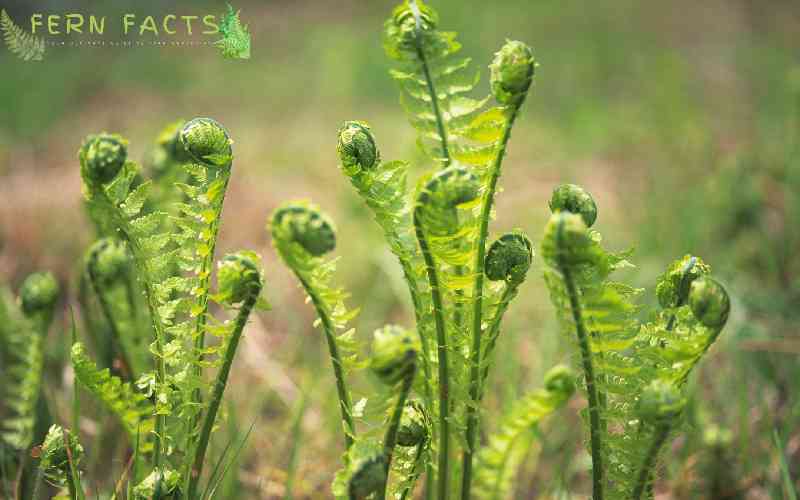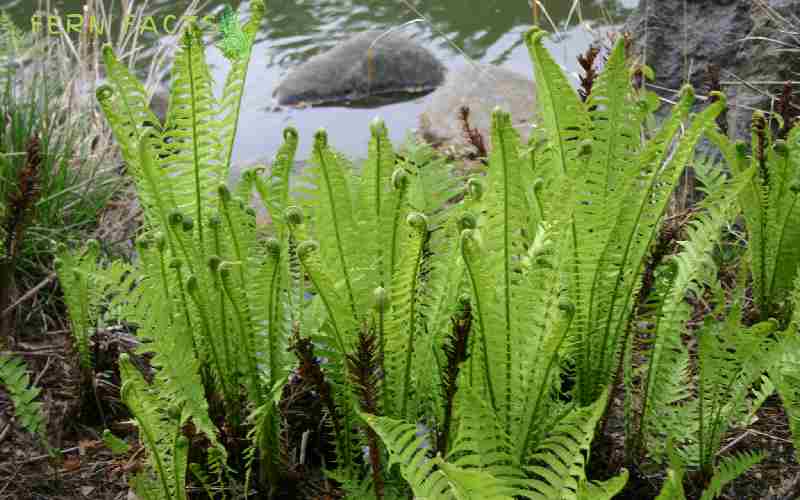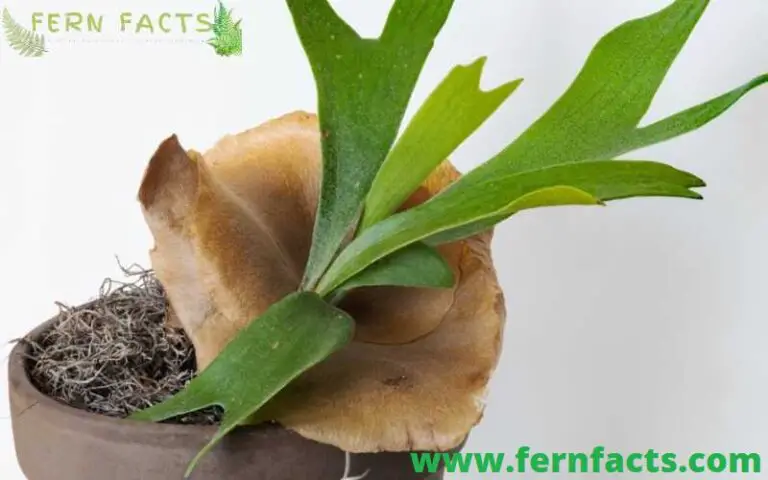How to Plant and Grow Ostrich Fern
Ostrich ferns are one of the ferns which grows aggressively in a crown shape. These ferns are staple woodland ferns that can rapidly fill your garden space.
However, if you already made up your mind to buy Ostrich ferns for yourself, then this article will fully guide you regarding everything about these plants.
In this article, I will illustrate the overview of this ostrich fern and their characteristics. Later on, I’ll give you brief guidelines such as where, when and how to plant these ferns along with how to maintain and care for these ferns so that you’ll be able to make them thrive in your garden.
So let’s begin.
Overview of Ostrich Fern

- Botanical name: Matteuccia struthiopteris
- Common name: Ostrich fern
- Plants: Deciduous perennial
- Native range: North America, Europe, Northern Asia
- Native habitats: rich woodlands, low areas, swamps
- Shade requirements: partial or fully shaded
- Height: around 3 to 8 ft
- Width: up to 3-5 ft
- Hardyzone: 3, 4, 5, 6, 7
- Soil: acidic soil (5- 6) pH, moist, organic matter
Ostrich ferns are also known as fiddlehead ferns or shuttlecock ferns. Although the word derives from the ancient Greek word ostrich which is the most common name.
These ferns are deciduous plants that have crown shape or colony-forming ferns. These ferns grow completely in a vertical crown shape on the ground.
These ostrich ferns are also one of the ornamental ferns in gardens. Similarly these ferns also got awards from the Royal Horticultural Society’s Award of Garden merit.
If you are planning to buy these ferns in your garden, then let me tell you these ferns are very expensive. Therefore, you need to raise your budget so buy these deciduous plants.
Moreover, these plants also lose their fronds during the summer seasons where they lose their beauty. Especially during winter and cold seasons, if you don’t protect them, their situation will be more vulnerable.
Where to Plant Ostrich Ferns
If you made up your mind to buy ostrich plants then you also need to have knowledge about their place in order to give them an appropriate atmosphere for thriving.
Ostrich ferns need a shady place like all other ferns. Generally, these ostrich ferns prefer cooler climates. These ferns mostly struggle to survive in a warmer atmosphere.
If you place your ferns in woody areas surrounded by watery places these would be their suitable place to thrive. You can also shade broader, a rain garden in a woodland to plant your ostrich ferns.
When and How to Plant Ostrich Ferns
Planting your ostrich in the correct season, you can grow healthy ferns all year long. The most suitable time is the spring and fall seasons to plant these ostrich ferns.
So that you can have blooming plants by the end of next season. After being planted you can also naturalize these ferns in your landscape. Also, these ferns cover garden landscapes and help to grow other plants.
Similarly, these ferns need shallow or deep holes to spread their roots. So if you are planting them in a container try to choose a bigger pot so that they can get enough space to emerge their roots.
And so, for your garden outdoor plants, you need to dig up the hole a little deeper or shallower so that their roots get space to spread.
Ostrich Ferns Care and Maintenance
According to their ideal growth, ostrich ferns can grow or spread aggressively. Now let’s look at the steps you can do to maintain your ferns.
Light
Ostrich ferns have less tolerance to direct sunlight. They can tolerate minimum sun exposure around themselves. They are mostly fond of cooler temperatures and ample moisture in the atmosphere.
Try to not give them direct sunlight exposure because too much sunlight can burn their leaves or can turn their leaves yellow.
Soil and water
Ostrich ferns prefer moist soil with rich organic matter in it. Try to mix their soil with rich acidic organic compost. Try to water your plants and keep the soil moist.
They mostly prefer damp to moist wet conditions around themselves. Therefore, you need to avoid their dry soil conditions because dry soil can lead their leaves to brown.
And so, the plant’s growth can be slower and will not get proper nutrients from the dry soil which ultimately leads your plant to die.
Temperature and Humidity
As these ostrich ferns are less tolerant of a warmer atmosphere, therefore excessive heat and warmer environment can burn their foliage.
If you live in a warmer country, then you need to water your plants constantly and have to keep their soil moist all the time. Even in winter
Seasons they can tolerate frigid cold environments below hardy zone 3 as well. These plants are thonone of the thought plants for outdoor planting that’s why humidity is not a bigger issue for these plants.
Fertilizer
In order to make their spoil you need to mix rich compost or organic matter in their soil. If the soil has poor components, in such cas4es you need to feed your ferns monthly with a 20-20-20 balanced fertilizer in all seasons. This will balance their growth and help to boost your plants.
Pruning
You also need to prune your ostrich ferns on a monthly basis.
Otherwise, it will be more difficult to control their shape and size intact. After winter seasons this fern grows again then you can prune, cut off, and trim their dead fronds.
By pruning them during their growing seasons, you will be able to strengthen their growth level more successfully.
Potting and Repotting Ostrich Ferns
Potting and repotting is also a very important part for any plant to enhance their growing. As they are usually pretty large plants, if you plant them in a container make sure you use bigger container with shallow space.
Eleven when you are repotting them, try to choose a slightly bigger container from the previous one so that they get maximum space to spread their roots properly.
This will help them to grow. While mixing their soil, try to make rich soil with all other nutrients properties like clay soil, alkaline, and balance the acidic pH level as well.
After planting your ferns, keep them in a shaded or partially shaded place. Avoid direct sunlight and water them regularly.
Pest and Other Problem
These ferns don’t have any specific problems as their growth is quite invasive. Under the good weather conditions and appropriate atmosphere they grow aggressively while spreading themselves.
So, their aggressive growth can be a little intolerable for you to handle sometimes. Therefore, you need to pune, trim and cut off these pants regularly so that you can have control on their growth level.
Besides these ostrich are also deer resistant plants, therefore, your garden will not encounter any kind of deer.
How to Propagate Ostrich Ferns
Propagation is also one of the processes where you can increase their amount and also give them healthy growth. The best time for dividing your plants is early spring.
Because in that season the new growth begins, therefore if you do propagation at that time each section will have individual growth.
For propagation, divide the main plants into two sections with roots and replant each section with different containers or on the ground with the same depth as the previous plants.
After replanting your ostrich ferns you need to water them properly to keep the soil moist.

Companion Plants for Ostrich Ferns in Your Garden
If you want to have an elegant look around your ostrich ferns so that the view of your garden is enhanced. There are some complimentary ferns that you can buy for your ostrich plants.
Anemones flowers is one of the complimentary plants which looks elegant around ostrich ferns. Its slightly cupped-shaped flowers bloom in summer, spring, and fall.
Another one is Rush or corkscrew rush which adds more moisture, around the atmosphere of the plants. Irish flowers are also another companion plant for you to have which will give companion to your ostrich ferns.
These are also called rainbow flowers which will add color to your green foliage ostrich ferns.
Explore Further Caring for and Cultivating Bracken Fern
Final thought
On a final thought, Ostrich ferns are very invasive plants that have aggressive growth in nature.
By following all these guidelines and instructions such as caring tips, growing tips, propagation you will be able to make these plants flourish these ferns in your garden.
Nonetheless, you can also amplify your garden look by buying ostrich companion plants which will give you an eye-capturing view to observe.







